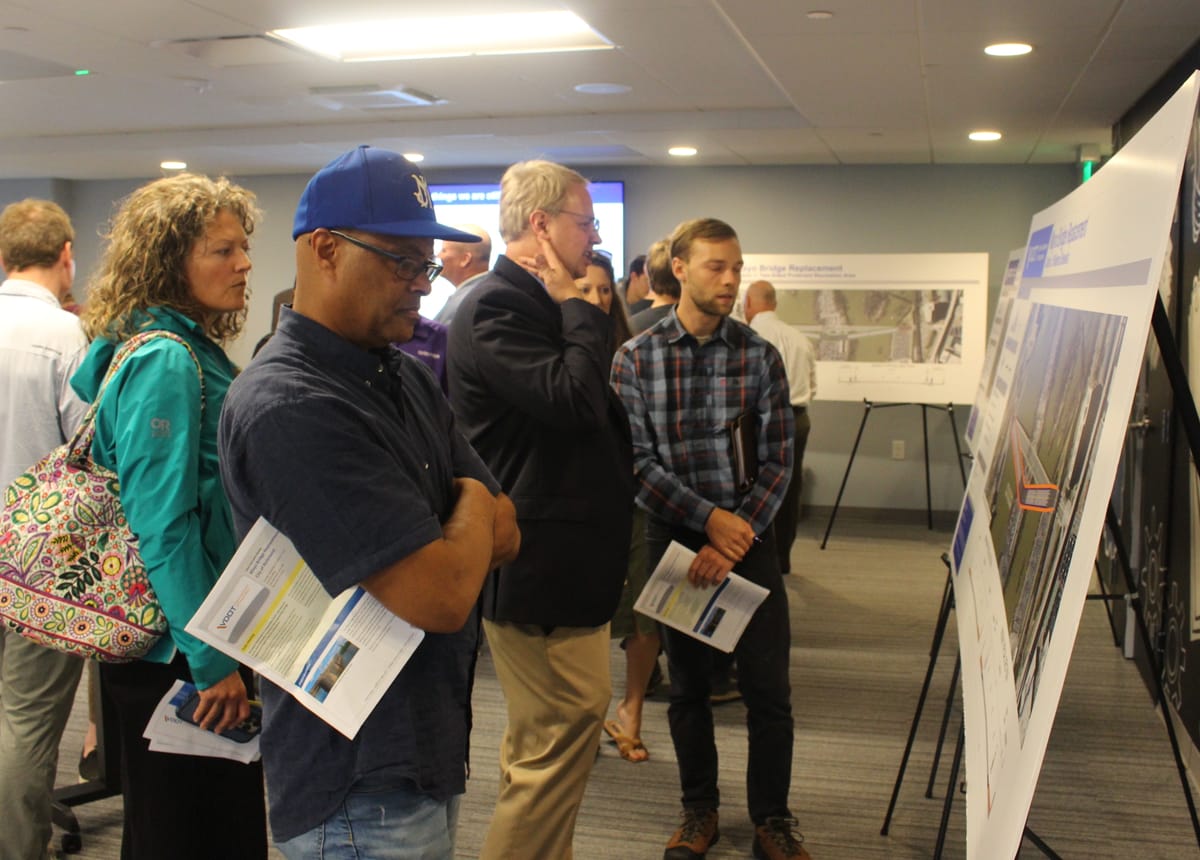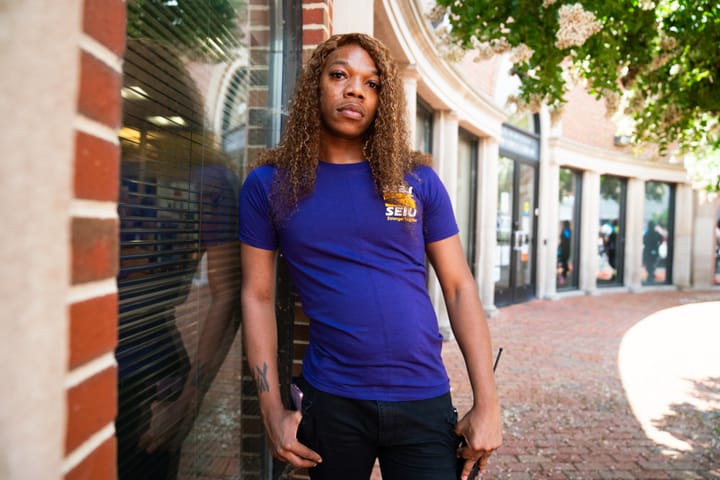At Mayo Bridge meeting, citizens call for two-lane design, protected bike lanes

A two-lane bridge and a protected bike lane — those were the two most common asks for the new Mayo Bridge across the James River, said Scott Fisher, the mega-projects engineer for the Virginia Department of Transportation’s Richmond division, at a public information session in Manchester Tuesday evening.
“People want to see a two-lane bridge,” he said. When one resident wandered up to the board Fisher was manning — showing Option 2, a four-lane bridge flanked by bike lanes, with a “protected recreation area" on one edge and a sidewalk on the other — and asked why the design didn’t place a protective barrier between the bike lane and the vehicle lanes, Fisher replied: “I’ve heard that from everyone who has come by.”
The current Mayo Bridge was constructed in 1913, connecting 14th Street in the city’s downtown to the then-newly acquired Manchester. Today, it carries two lanes of vehicle traffic and a sidewalk in both the north and southbound directions. VDOT classifies the aged bridge as “structurally deficient,” and the city has been considering replacing all or part of it for more than a decade.
“I hate it. I can’t stand it,” said Luke Hollomon, who said he uses the bridge at least three times a week. “As a cyclist, there’s no way to be safe.”
While VDOT initially intended to replace only the bridge’s superstructure — that is, the top portion — the discovery that the concrete of the piers supporting it was deteriorating led to the 2022 decision to replace the entire structure.
What will go in its place remains an open question. VDOT showed three potential project designs to the public Tuesday, but officials emphasized that all can be changed depending on public feedback and data from pending studies. A recent survey by the department of more than 1300 people found that cyclist safety and pedestrian safety were respondents’ biggest concerns. Over half — 54% — said their highest priority was increasing bike and pedestrian facilities.
“Nothing’s been decided,” said VDOT project manager William Wheeler. “Everything is on the table,” said Fisher.

Brantley Tyndall, director of Bike Walk RVA, said the decision boils down to “should we get a narrow bridge or a wide bridge.”
For the newly formed Coalition for a Livable Mayo Bridge, a group of organizations that includes Bike Walk RVA, the Shockoe Partnership, Manchester Alliance, Venture Richmond and others, the goal is “not committing to a bridge that is too wide,” said Tyndall. A wider bridge, he said, would encourage faster traffic while also increasing project costs.

Shawna Shade, a member of Friends of the James River Park, said she “can appreciate the need to balance” bike and car traffic on the new bridge but noted that in the current configuration, “I’ve seen people speed across it.”
Greg Velzy, another member of the group and chair of the Falls of the James Scenic River Advisory Committee, said he was interested in a three-lane road, with two lanes running northbound into downtown and one into Manchester, in line with existing road use on each bank.
With no design chosen, VDOT hasn’t set a timeline or final cost for the replacement. Also undetermined is how travelers will access Mayo Island, which Richmond purchased in January.

Interest among the public is high: At least 115 people showed up for VDOT’s public information session Tuesday — a turnout that Chet Parsons, executive director of the Central Virginia Transit Authority, said is “a good sign of a well-functioning system.”
And while vehicle lanes and bike lane barriers appeared to be the hottest topics of the night, they weren’t the only ones. Some attendees like Kelsey Powell, a volunteer with James River Women, said they had turned out to ensure the bridge design would also accommodate river uses, even during construction.
“We’re mostly concerned about the in-between periods and making sure there’s access for boaters,” she said.
VDOT is currently conducting a traffic study on the bridge and accepting public comments through Sept. 27. The department will then provide design recommendations to the city, and the final design will be developed “collaboratively” by both, said VDOT spokesperson Lorena Arias.
“Once an acceptable design concept is finalized through the collaborative process, per the City of Richmond Charter (Section 17.07), approval from the City Planning Commission is necessary,” Arias wrote in an email. “That approval will inform the remainder of the project design development.”
This story has been updated to correct the spelling of Luke Hollomon's name.






